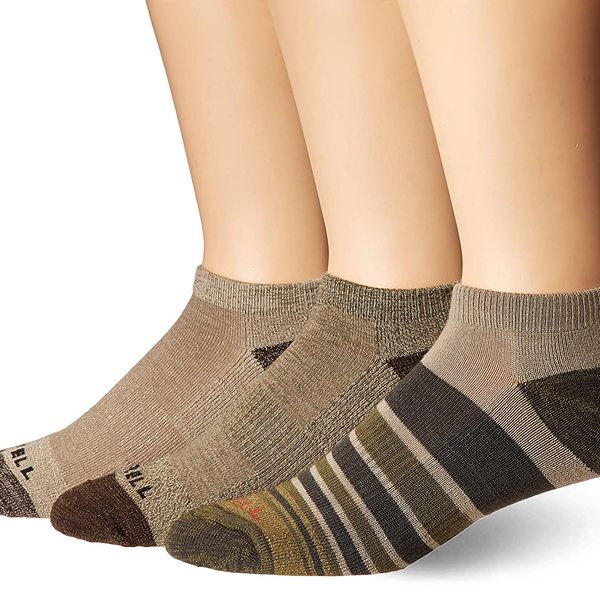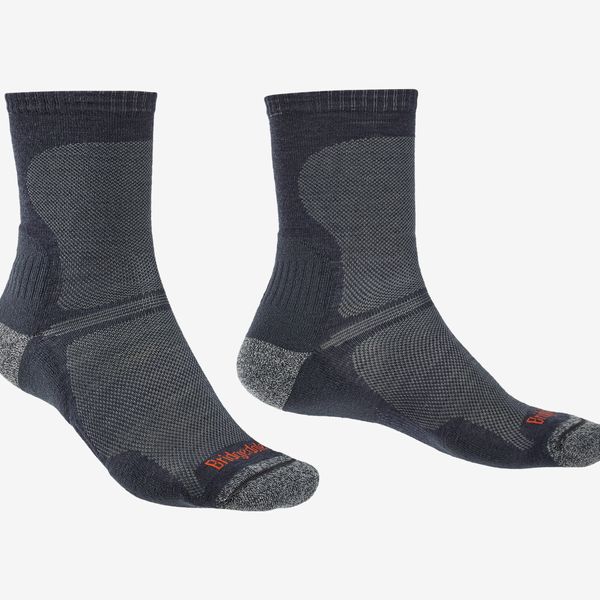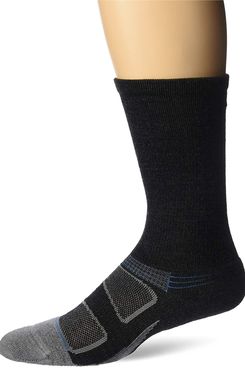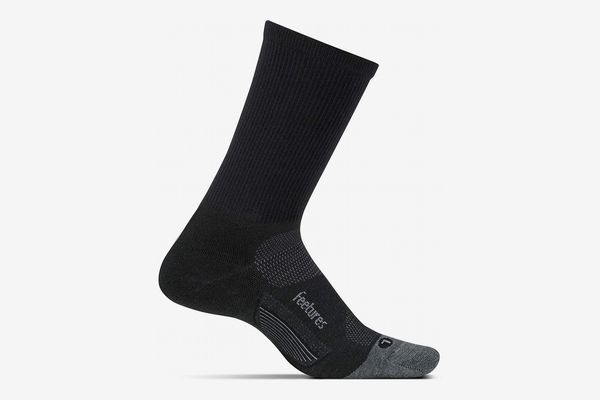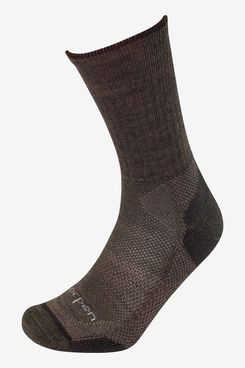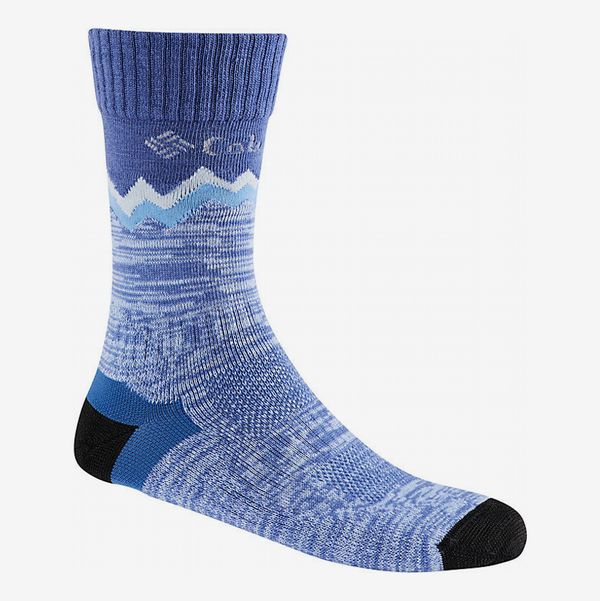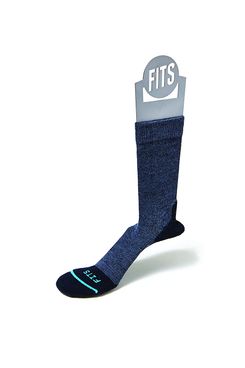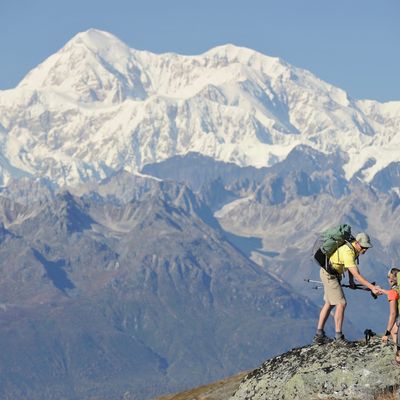
Hiking socks are literally made for walking (a five-mile hike breaks down to some 10,000 steps), and I find them so comfortable that they’re often my go-to socks for everyday wear. All good hiking socks have qualities you’d want in regular socks. They wick sweat away from your feet and dry quickly, and are at least mildly elastic (staying snug even after hours of active wear) while offering support and cushioning.
Wool is the most popular hiking-sock material, thanks to its natural sweat-wicking and antimicrobial properties. But all-wool socks can get quite toasty — especially in the summer months — and some people find them itchy. So I recommend looking for a wool-synthetic blend, preferably with a small percentage of Spandex or other stretchy material (just avoid cotton pairs like the plague). I also look for socks with technical elements such as mesh panels, extra cushioning, arch and ankle support, and seam construction (for hot weather, look for socks designed for high breathability; for long hikes, favor support and cushioning; always opt for flat seams). Below, seven pairs of hiking socks that I swear by after wearing them on plenty of treks — and even more days just trudging from home to office and back.
Best ankle hiking socks
Merrell’s ankle hiking socks offer the same cushioning and reinforcement found in its taller styles — because they’re the exact same socks, just cut lower. They feature arch support, a reinforced heel and toe, and a blend of acrylic, wool, nylon, and spandex that makes them perfectly snug yet comfortable.
Best crew hiking socks
The thinnest, lightest hiking socks I’ve ever worn, these still provide solid support thanks to an elasticized arch. The thin weave of 56 percent merino wool, 41 percent nylon-polyamide, and 3 percent lycra allows for plenty of breathability, and won’t suffocate your feet even on the longest journeys. I should note that they lack the cushioning a thicker sock offers — but if you have comfortable boots, these are a superlative option for warm-weather wear.
[Editor’s note: These socks are sold out in the crew size, but they’re available in a 3/4 crew size for $18 on Amazon.]
These socks have the least amount of wool among my favorites. Their blend of merino (29 percent), bamboo rayon (36 percent), nylon (30 percent), and spandex (5 percent) gives them an almost silky feel, and allows them to stay nice and cool. Large mesh patches on the upper ventilate excess heat and sweat, and tight knitting on the bottom offers good arch support. At $22 a pair, they’re not the cheapest, but I’ve worn the same pair regularly for a year and they’ve yet to show signs of wearing out.
I’ve also worn the same pair of these slightly less-expensive Feetures hiking socks at least once a week for the past year, and they too have held up. Their blend of merino wool and Tencel — a material made from wood pulp — gives them a silkiness similar to the above pair, and they also feature mesh patches (for ventilation) and tight knitting on the bottom (for arch support).
This is another great pair for anyone who finds mostly wool socks too warm or itchy. These socks feature a fabric blend that’s 37.5 percent merino and 37.5 percent acrylic, with the rest being a combination of lycra and nylon. This specific weave results in a sock snug enough to stay in place even during high-intensity activities that also wicks away sweat well. The heel and toe have decent padding, too. But despite their “Light” name, I’d say these socks are more medium weight, making them best-suited for mild to cool weather.
When you’re climbing a mountain, it’s not uncommon to go from hot to cold weather conditions as you make your way to the top. But chances are you’re not going to want to pause halfway through your ascent to change socks. That’s why I like to wear these on days I anticipate changes in temperature (whether I’m spending them on the trail, or running around town). The socks offer good wicking and moisture release, but are also thick enough to keep your feet warm. They also have a thicker collar at the top (resulting in less friction caused by boot cuffs rubbing against them), and blister-preventing knitting at the heel and toe (to protect those areas against skin abrasion).
Best extra-tall crew hiking socks
These socks rise up to your mid-calf, which is higher than most others that call themselves “crew.” But if you’re walking through tall grass and low brambles in a pair of shorts, you’ll likely appreciate that rise — at least on a milder day (at 65 percent wool, this pair wouldn’t be the best to wear when it’s superhot). Even though it’s predominantly wool, the material is still on the thinner side, and supersoft. Plus, these socks also offer decent cushioning and stay in place well, making them a great option for longer treks.
The Strategist is designed to surface the most useful, expert recommendations for things to buy across the vast e-commerce landscape. Some of our latest conquests include the best acne treatments, rolling luggage, pillows for side sleepers, natural anxiety remedies, and bath towels. We update links when possible, but note that deals can expire and all prices are subject to change.
